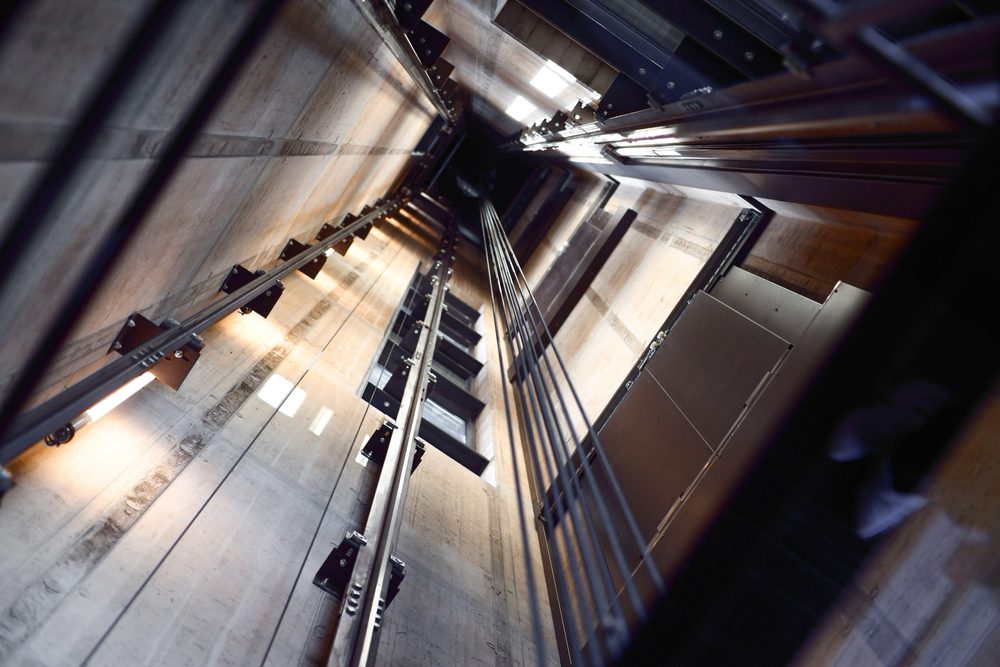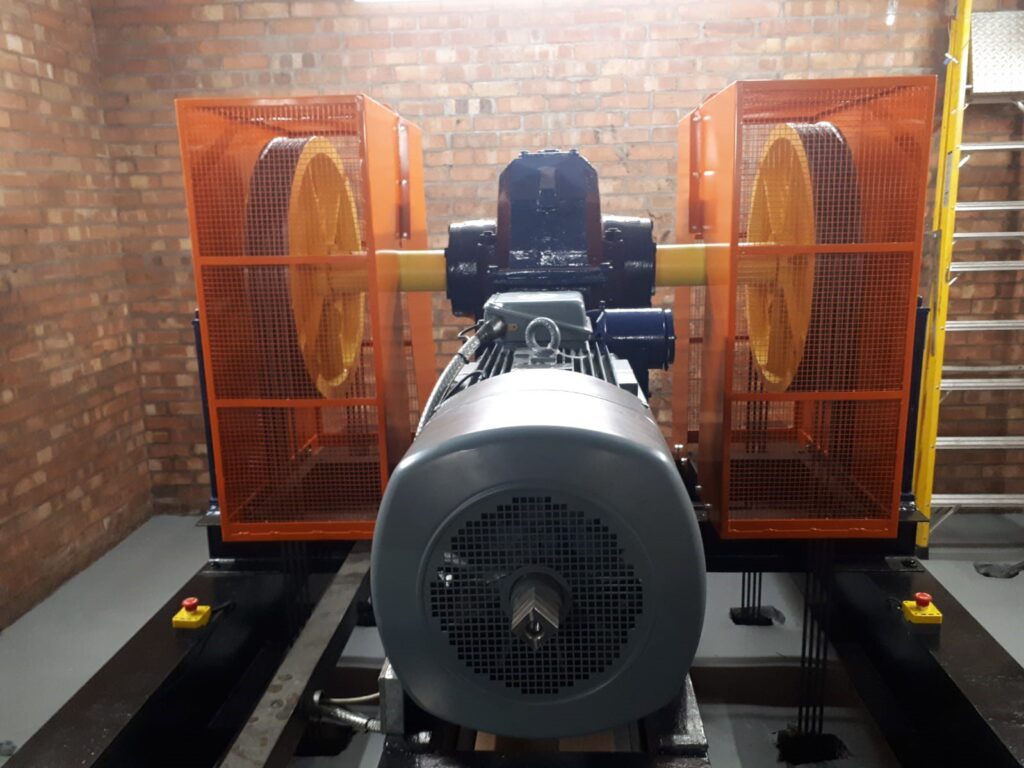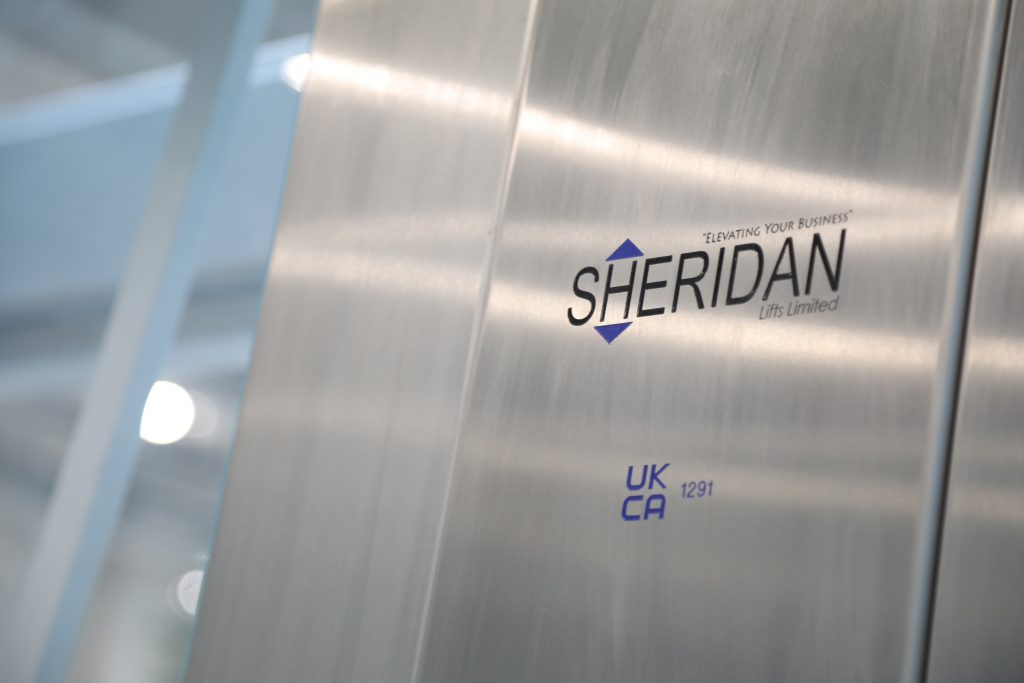Most of the lifts in use today are either hydraulic or traction lifts. Both of these have their advantages and disadvantages, but they are also best suited to certain situations that determine which one should be used.
These conditions include the size of the building, what types of loads they will typically be carrying, and the access needed by the lift and the building. As an example, in a hospital environment, they may require elevators that can carry heavier loads such as beds and equipment.
As an organisation, it is important when considering installing a lift, that it meets the requirements you need. It also needs to be suitable for the location and building that it will be used in. However, there are also a number of other factors that you will need to consider, and they will have a direct impact on your business and its budget.
Regardless of the type of elevator you choose, they all work in the same way. They ascend and descend via the lift shaft to all of the floors and can carry loads up to the capacity of the lift.

What is a Hydraulic Lift?
Hydraulic lifts are one of the most common types of lift mechanisms since the 20th century. They use an electrically powered pump to force hydraulic fluid through a jack-lifting system. This will then raise and lower the elevator from beneath. You have likely seen hydraulic systems in shopping centres and other smaller buildings, often with a clear glass lift car otherwise called a scenic lift.
Advantages of Hydraulic Lifts
When considering which types of elevators to choose, it is important to look at the advantages and disadvantages of both. This can give you a better understanding of which one will work the best, alongside other issues such as cost.
These are some of the advantages of using a hydraulic elevator.
- Cost – Cost is a big factor for many companies, and hydraulic lifts are typically less expensive to install than other elevator types. If your building can accommodate a hydraulic lift, then this is often seen as the best option due to the initial cost. For companies that are small and have limited resources, this will be a better option.
- Take up less space – When you are considering which lift to choose, the space you have available is a big factor. Hydraulic lifts will have a maximum travel distance that limits the floors they can service. Most hydraulic elevators serve a ground floor and a 2nd floor. Typically, hydraulic lifts require 10% less area for the lift shaft than other types, which means they can be used in smaller buildings.
- No need for an operating room – These types of lifts do not require a separate machine room to operate. This again is ideal for smaller buildings where space is at a premium.
- There are no overhead structural requirements for a hydraulic lift. This is because there are no overhead motors needed like those of the traction elevator. The load-bearing walls can bear the brunt of the elevator load as well, so no additional structures are required.
Disadvantages of Hydraulic Lifts
Some of the reasons that hydraulic lifts work so well, can also sometimes become a disadvantage. Depending on the type of building you are using and how many people you need to move, these disadvantages can be big.
- Travel time can be an issue. Hydraulic lifts can be slow and this can cause issues if you need to move a large number of people quickly. Hydraulic lifts cannot move faster than 150 feet per minute, so travel speeds need to be a consideration.
- Requires temperature control system – Because hydraulic lifts use oil under high pressure in their operation, it can cause the oil to get too hot. This means that an effective temperature control system is needed to ensure the oil doesn’t overheat.
- Potential air pollution – When oil gets hot, it can start to emit an odour. This can sometimes be smelt in the lift or sometimes outside the lift. Effective cooling will reduce the smell, but it still needs to be monitored as some degree of smell might not be avoided.
- Frequent maintenance – With hydraulic vs traction lifts, the hydraulic versions will often require more ongoing maintenance. As part of the essential safety requirements, the oil in hydraulic lifts needs to be replaced along with the filters that need to be replaced once per year. The hoses and fittings also need to be replaced every five years. This ongoing cost can make these lifts undesirable for some businesses.
- Potential for ground and water pollution – High-pressure oil can sometimes cause seals and other fittings to fail. This can cause a leak of the hydraulic oil at the base of the lift shaft. There are safety devices and safety mechanisms in place for this eventuality, but there can be other problems associated with the leaking of the oil. If oil leaks into the ground beneath the lift shaft, then this can contaminate the soil and potentially any groundwater. This is why regular maintenance and checking of the safety systems is vital.
- Noise can be an issue with hydraulic lifts. They are not as quiet as many traction lifts are, which can become a problem in office buildings or residential buildings. Usually, building designs incorporate a separate lift area, but this might not be possible if a new lift is installed in older high-rise buildings.
- Less smooth ride – Because lift movement is controlled by a hydraulic piston, this can sometimes make hydraulic lifts not as smooth compared to traction lifts. However, this isn’t always an issue, it depends on the use the lift will have during its serviceable life.
Despite these disadvantages, hydraulic lifts are still used in many commercial buildings and non-luxury buildings. As with traction lifts, they still have the emergency generators and emergency operations that other elevators require. They can also be energy efficient, which is often a key factor in modern buildings.

What is a Traction Lift?
When you look at the differences between hydraulic vs traction lifts, the biggest difference is the level of floor they can service. Traction lifts can service higher buildings because they don’t have a maximum length of piston they can use.
Traction lifts use cables or ropes, a sheave or pulley, a counterweight and a motor. Combined, these elements allow the lift to rise and fall from the lobby floor to the destination floor quickly and quietly.
The motor is attached to the sheave which is a toothed pulley. A rope or steel cable is then looped over it with one end attached to the car and the other attached to a counterweight. Because of this balance, these lifts are usually low on energy consumption. Here are some of the advantages and disadvantages of traction lifts.
Advantages of Traction Lifts
As with the hydraulic lift, there are advantages and disadvantages to the traction lifts. The requirement and application of the lift depend on the use and scenarios that fit the usage of the elevator.
- Travel higher – These traction lifts are most commonly used in office buildings. You will often see these as a bank of elevators used in taller buildings. This is because they have higher travel heights than hydraulic lifts. In particularly tall buildings, you may find the lifts will travel to a certain height, then other elevators will continue from there.
- Comprehensive safety systems – In an emergency situation, traction lifts have many safety systems that can cut in to prevent injury to the passengers. If the cable was to break, they are fitted with integrated disk brakes which prevent the car from falling. This also enables it if the car starts to move too fast.
- Traction lifts are more efficient and reliable than hydraulic lifts. This is because there are fewer mechanical components that can go wrong.
- Use less space – Because of the separate area needed for the oil storage, hydraulic lifts often take up more space than traction versions.
- Higher speed – Traction lifts are often faster than their hydraulic counterparts. This is because hydraulic systems can only run at a limited speed. This makes traction elevators especially useful in taller buildings. The fastest passenger lift in the world climbs at 3,314 feet or 1,010 metres per minute. That is 100 floors in 26 seconds.
- Less maintenance – Maintenance on traction lifts is not as frequent as for hydraulic lifts. However, regular minor maintenance is essential for continued operation without breakdowns.
- Heavier weights – Traction lifts can typically carry larger loads than hydraulic types. This means they are often used as commercial elevators and service elevators.
- Quieter – Traction lifts are usually a lot quieter than hydraulic versions, this is a great advantage when using them in residential buildings or office buildings where noise could be an issue.
While traction lifts are long-lasting and energy efficient, there are some disadvantages to having them installed.
Disadvantages of Traction Lifts
As with anything, there are pros and cons associated with them. Although there are disadvantages to traction lifts, they are not as many potentially as there are with hydraulic lifts.
- Requires operating room –Traction lifts can sometimes need a machine room to operate. This can mean valuable space taken up in the building. However, it is possible to find a machine room-less version that won’t need the additional space.
- Cost – Because of the additional speed and efficiency, traction lifts can cost more than hydraulic versions. This can also be because they need to service more floors so need additional automatic doors.
- Requires additional framework – Unlike hydraulic lifts, traction versions need to have a frame installed in the lift shaft with the emergency fittings as well as the counterweight. It also needs a framework at the top of the lift shaft to house the motor and the gears. This is usually fitted at the time the building is built, but it will need to be retrofitted if the building has no lift.
- Faults can occur just as with any lift design. The chances of a cable breaking are small, but it can happen. However, many safety features will prevent any injury or damage. Modern traction lifts employ several cables and can hold a lot of weight with only one cable. That said, it is always worth being aware of any risks.

Choosing the Right Lift for Your Business with Sheridan Lifts
At Sheridan Lifts, we pride ourselves on giving our customers the best experience and service possible. We are a family-run firm that was founded in 1979 by Stanley Sheridan. Since that time, we have spent many years learning and adapting alongside new technology and amassing a wealth of experience. This makes us well-placed to give you the right service and reliable products.
When looking to have a lift installed, you need to understand the requirements of the lift and the suitability of the building. For taller buildings of more than two or three floors, a traction lift may be your best solution.
The first step in the process of installing a lift is to design the elevator and incorporate those designs into the wider plan of the building. Because all buildings are different, the choice of lift might have to be adapted to fit the building.
Cost
The cost of a new lift is also something that needs to be taken into consideration before it is installed. Usually, as a business, you will have an idea of how much budget you can spend towards a new lift. At Sheridan Lifts, we will be able to take you through the whole process and give you the best options that will fit into your budget.
Thankfully, you can also lease a new lift instead of buying one outright. We offer a cost-effective approach that allows companies to have all the usual high-quality products and services but spread the payments out over a long period. This makes it a lot easier for you to budget against, and also means a growing company can still get the services they need.
The overall cost will be affected by a number of different factors.
- The number of lifts required for the project
- The number of floors the lift will service
- The size of the lift needed to service all of the users
- Whether the lift will be used for commercial or residential or office users
- The dimensions of the existing building and where it can accommodate a lift shaft
- If planning permission is required to install the lift. This could also include the relevant permission needed to install a lift into a listed building
- Any other relevant safety or industry requirements
Maintenance
All types of lifts require regular maintenance to keep them running smoothly. Thankfully at Sheridan Lifts, we have a dedicated team that can perform these regular maintenance checks for you.
If there are any issues with the lift, then we have a UK-based telephone number that is available 24 hours a day. This ensures that you can get access to help whenever it is needed. We are a family-run business, so our customers are important to us. Getting the right customer care and support is vital.
Wherever your business is located, we have a dedicated team of technicians and engineers based throughout the UK. This means that when you need help, we are never too far away to come and fix the problem.
Lifts For Any Purpose
We don’t just provide passenger lifts inside an office or commercial building. We can also provide any type of lift service you might need.
Together with service lifts and bespoke elevators, we can also provide dumbwaiters for food and other service industries. We can also provide car lifts for the automotive industry. For your customers, we can also fit scenic lifts that provide a pleasant view while using the elevator.
To choose Sheridan Lifts, it is as simple as contacting us and one of our friendly team will speak to you about your needs.